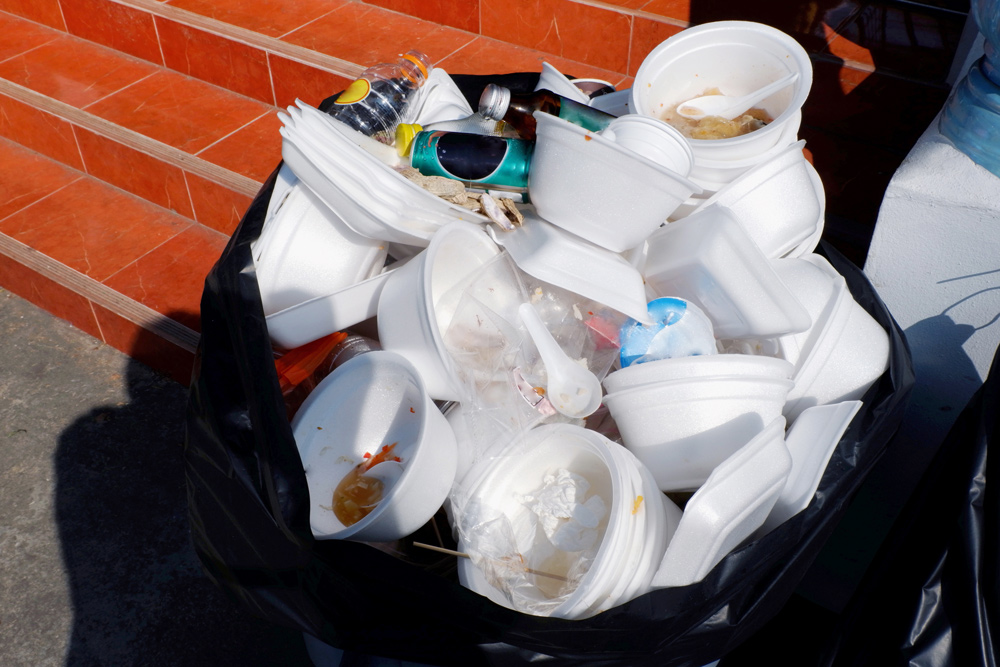Banning Styrofoam Products is Not as Cut and Dry as You Might Think
Posted on: September 15th, 2020

Many continue to question why more efforts haven’t been made for banning styrofoam products from fast-food containers to protective packaging across North America given their increasing and harmful presence in landfills and oceans.
Styrofoam comprises about 30% of landfill space and takes an estimated 500 years to decompose (if at all). Throughout that time, it leaches toxins such as Styrene and Benzene (both suspected carcinogens and known neurotoxins) into not only the environment but your blood stream as well.
As for its impact on waterways, it winds up being ingested by aquatic animals, clogging digestive systems and limiting buoyancy, which forces them to sink, eventually killing them.
Styrofoam grew in popularity back in 1947, when researchers at Dow’s Chemical Physics Lab found a way to make foamed polystyrene. This created a product that was cheap to produce and purchase, with the tradeoff being it’s harmful impact on animals, people and the environment.
So why is banning styrofoam such a difficult initiative throughout North American?
For starters, unless a substituting product is created using raw materials which are completely biodegradable (such as HC’s molded fiber products) it may only add to the problem.
According to the California State Water Resources Control Board, “Mere substitution would not result in reduced trash generation if such product substitution would be discarded in the same manner as the banned item.”
With many of the organizations currently using styrofoam products employing a great number of minorities, they claim that banning styrofoam altogether would encroach upon their already thin profit margins and force them to cut labor.
Additionally, some believe that banning styrofoam could impact consumer spending. According to a study done by New York City on their proposed ban on styrofoam food service containers, for every $1 spent on foam containers, an alternative method would cost $1.94 (almost double). That increase would be added to the overall cost of what consumers are buying.
While banning styrofoam is not impossible, a viable solution needs to be offered that is biodegradable and cost effective for minimal disruption to those who currently utilize styrofoam throughout their organizations.
Biodegradable Fiber
HC can customize product made exclusively from our molder fiber pulp slurry which is completely biodegradable.
Learn More ☰ Menu
☰ Menu